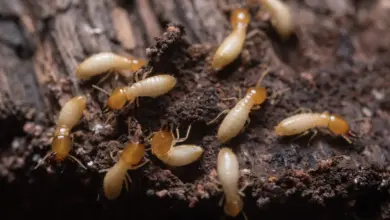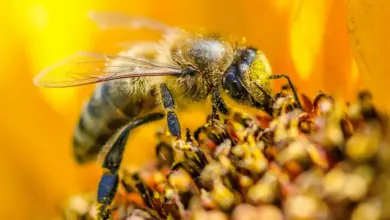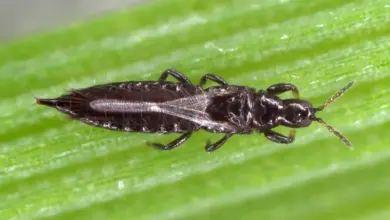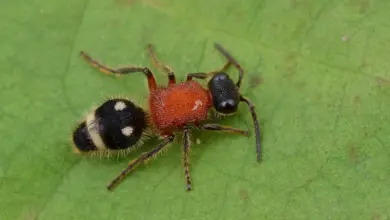Tomentose Burying Beetle: Essential Facts and Insights
The tomentose burying beetle is a fascinating and unique insect that goes through a complex life cycle as part of the carrion beetle family. These beetles play an important role in our ecosystem by helping to break down and recycle organic matter. In this article, we will explore what sets the tomentose burying beetle apart from its relatives, as well as discover some interesting facts about their biology and behavior.
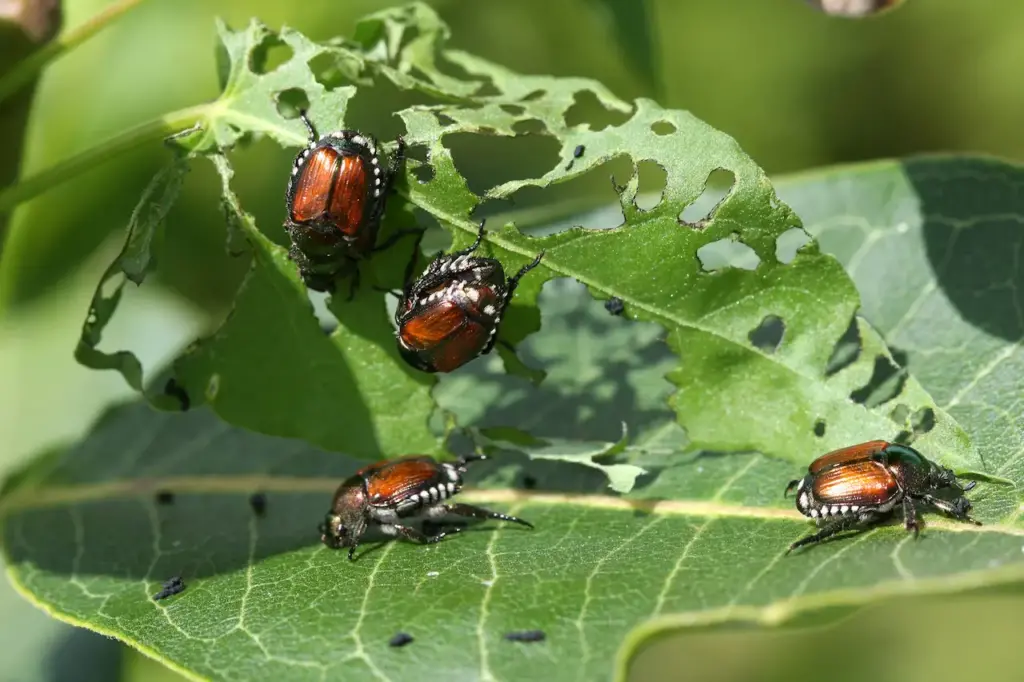
Known scientifically as Nicrophorus tomentosus, the tomentose burying beetle is among the largest carrion beetles in North America, reaching lengths of 1.0 to 1.8 inches 25 to 35 centimeters. As their name suggests, one of the key characteristics of these beetles is their ability to bury animal carcasses, a behavior necessary for their reproduction. In fact, they are quite picky when it comes to finding the perfect carcass for breeding, counting on the right size and freshness. Once they find a suitable carcass, the male beetle releases pheromones to attract a mate, and together they work efficiently to bury it here.
As you learn more about the tomentose burying beetle, you’ll find that their role in nature is essential. Not only do they help break down dead animals, but they also provide a valuable service by controlling populations of flies and limiting the spread of disease. Understanding the life and behavior of these beetles allows us to appreciate the intricacies and interconnectedness of our natural world.
What is A Tomentose Burying Beetle
Taxonomy
The Tomentose Burying Beetle, scientifically known as Nicrophorus tomentosus, is a species of burying beetle belonging to the family Silphidae. These unique arthropods are classified under the order Coleoptera, suborder Polyphaga, infraorder Staphyliniformia, and superfamily Staphylinoidea.
Physical Attributes
Tomentose Burying Beetles are characterized by their distinctive appearance. They have black exoskeletons adorned with bright yellow markings, which make them resemble bumblebees. These beetles range in size from 1 to 1.8 inches (25 to 35 centimeters) in length, with sensitive clubbed antennae useful for detecting food. Some features of their appearance include:
- Black exoskeleton with bright yellow markings
- Clubbed antennae for detecting carrion
- Size ranges between 1 and 1.8 inches (25 to 35 centimeters)
Diet and Habitat
As members of the carrion beetle family, Tomentose Burying Beetles play an essential role in the ecosystem by recycling nutrients from deceased animals. Their diet primarily consists of small carcasses, such as voles, which they bury to feed and reproduce. They are also known to consume fungi as a supplement to their main diet.
In their habitat, the sensitive antennae of these beetles help them locate carrion, which they then bury to prevent other insects from accessing the food source. This also provides a safe environment for their larvae to grow, away from potential predators. Overall, these fascinating insects are an essential part of nature’s intricate balance, breaking down dead organic matter and promoting the health of their ecosystems.
Distribution and Range
North America
The tomentose burying beetle can be found in various parts of North America. In the United States, its range extends from the East Coast, with some sightings in the Maryland Biodiversity Project, westward through shrubby areas, open grasslands, and forests. These beetles have also been observed in parts of Canada, which contributes to their distribution in this region.
- Areas: Eastern United States and Canada
- Habitats: forests, shrubby areas, open grasslands
Beyond
Though the tomentose burying beetle’s primary range is in North America, it has also been found outside of the United States and Canada. Sightings have been reported in Mexico, expanding its distribution further south. You can explore the beetle’s range using resources like the iNat map and the Global Biodiversity Information Facility.
- Mexico: extends the beetle’s distribution southwards
- Online resources: iNat map, Global Biodiversity Information Facility
In summary, the tomentose burying beetle has a distribution spanning North America and even reaching into Mexico. Its range includes various habitats, such as forests, shrubby areas, and open grasslands. You can discover more about this fascinating beetle by consulting online resources and observing its presence in the wild.
Lifecycle and Reproduction
Tomentose burying beetles, also known as sexton beetles, experience a unique life cycle involving mating, eggs, and caring for their offspring. Let’s explore their lifecycle and reproduction process together in this brief, friendly guide.
Mating
To begin the reproduction process, a male sexton beetle locates a female beetle. They engage in a specific courting ritual, which involves the male stroking his antennae and front pair of legs on the female beetle’s body. After this successful courtship, the mating process begins.
Brood Carcasses and Eggs
Sexton beetles prefer to lay their eggs on the carcasses of small animals, such as birds or mice. They are called “burying beetles” because the adults actively bury the carcass, creating a perfect microenvironment for their developing larvae. Once the suitable carcass is underground, the female beetle lays her eggs on it.
Larvae and Growth
After the eggs hatch, the larvae emerge and begin to feed on the carcass their parents have so carefully prepared. As the larvae grow, they molt several times before entering the pupal stage. This stage is characterized by a hard, outer shell called a pupa.
- Larvae: The initial stage of growth for young sexton beetles
- Pupa: The intermediate stage between larvae and adult beetle, where they develop their final adult form
Adult Beetles
Upon emerging from the pupal stage, adult sexton beetles are ready to start the cycle all over again, finding new mates and preparing brood carcasses for their offspring. Throughout their life cycle, they play a vital role in the ecosystem by recycling nutrients from decaying animals back into the soil.
And that, dear readers, is a quick look at the fascinating life cycle and reproduction process of the tomentose burying beetle.
Tomentose Burying Beetle and The Ecosystem
When you spot a tomentose burying beetle, you might not realize how important these insects are to the ecosystem. Burying beetles play a vital role in nutrient cycling and decomposition, as they help break down dead animals, especially small vertebrates. Without them, dead animals would stay longer on the ground, potentially leading to diseases and unfavorable odors.
Tomentose burying beetles are known to have mutualistic relationships with other insects – such as mites. Mites hitch a ride on the beetle, and in return, they help the beetle by consuming fly eggs and other parasites that could threaten the beetle’s reproduction. This partnership maintains the balance of nutrients, reduces the number of pests, and boosts biodiversity. To find out more about tomentose burying beetle sightings, you can check the iNaturalist platform, where enthusiasts share their observations.
Besides decomposing dead animals, tomentose burying beetles indirectly benefit birds and other wildlife. As the beetles consume carcasses, they release essential nutrients back into the soil. These nutrients promote the growth of plants, which ultimately provide food and shelter for birds. By including both vertebrates and invertebrates in the food web, burying beetles support a more stable ecosystem.
Remember that tomentose burying beetles are beneficial insects that deserve your admiration and respect. By understanding their role in the ecosystem, you will learn to appreciate their presence, and, in turn, contribute to a healthier environment.
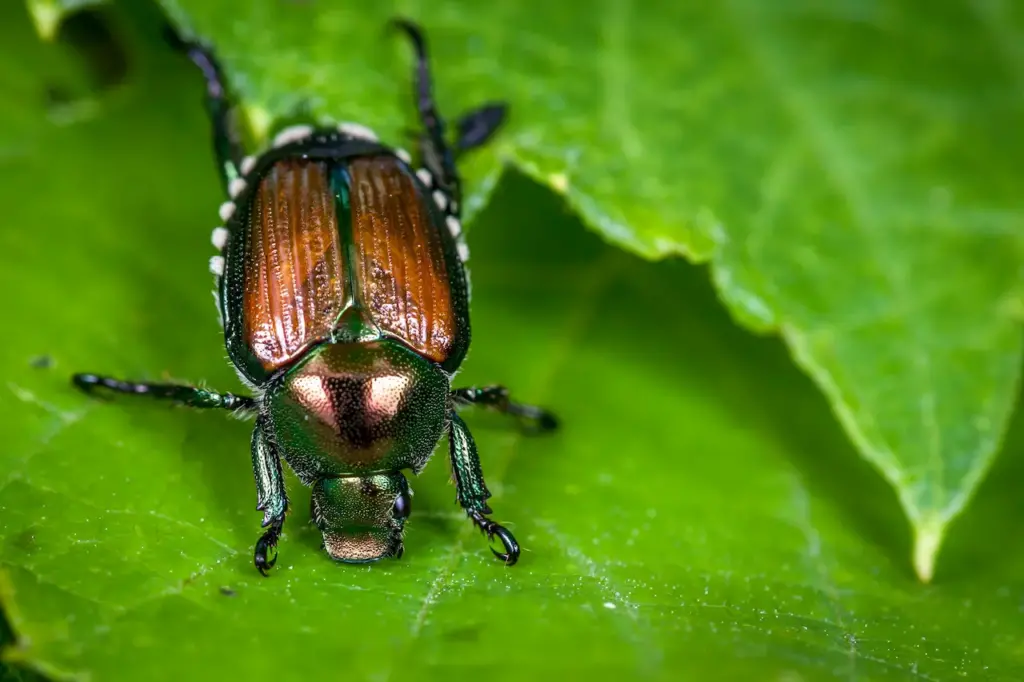
Anatomical Structure
Antennae
The tomentose burying beetle, also known as the sexton beetle, has unique antennae which are essential for their sensory perception. You’ll notice that these insects have a club at the end of each antennae, which helps them detect odors related to finding food sources like carrion.
Thorax
The thorax of the tomentose burying beetle is quite interesting. It is divided into three main parts: the prothorax, mesothorax, and metathorax. The prothorax features a prominent pronotum, which serves as a protective shield for the beetle’s head. Covering the second and third thoracic segments are the elytra, which are part of their exoskeleton and protect their delicate wings.
The tomentose burying beetle has a distinct scutellum, a small triangular plate located between the elytra, which is not always found in other beetle species.
Abdomen
The abdomen of these beetles has a striking appearance, as it often features a black color contrasted with orange markings. This combination can be considered an identification guide for this species within the Arthropoda phylum. The abdomen also houses important internal organs, such as the reproductive and digestive systems.
Here are some key features of the tomentose burying beetle’s anatomical structure:
- Unique antennae with club at the end
- Pronotum on the thorax to protect the head
- Elytra to shield their wings
- Scutellum between the elytra
- Black color with orange markings on the abdomen
By understanding the tomentose burying beetle’s anatomical structure, you can better appreciate these fascinating creatures and their importance in nature.
Research and Studies
The tomentose burying beetle, belonging to the family Silphidae and genus Nicrophorus, is an interesting species that has been a subject of various scientific studies. In this section, you will learn about some fascinating findings from various research sources.
The Animal Diversity Web is a great resource for general information about the tomentose burying beetle and its habitat, behavior, and life cycle. Here, you can explore the ecology and systematics of this species, as well as its conservation status.
Some studies have focused on this beetle’s reproductive behavior. For example, researchers have found that the tomentose burying beetle is quite resourceful in caring for offspring. These beetles use carrion as a food source for their larvae, burying it to prevent other scavengers from finding the carcass.
In addition, the Biodiversity Heritage Library and NatureServe Explorer 2.0 offer access to numerous scientific publications and data on the tomentose burying beetle. These resources can help deepen your understanding of the beetle’s role in the ecosystem and the challenges it faces.
When studying this species, researchers often turn to databases like the Global Biodiversity Information Facility (GBIF) and BOLD Systems BIN search for genetic information and taxonomic data. These tools can help track this beetle’s distribution, its genetic variation, and any possible connections to other species within its family.
To learn more about the tomentose burying beetle’s appearance and habits, you can check out resources like CUIC Insect Images. This database contains high-quality photographs of various insect specimens, including those from the genus Nicrophorus.
As you explore these resources, remember to approach the information with a critical eye and keep an open mind. The world of tomentose burying beetles offers many fascinating discoveries waiting for you to uncover. Happy researching!
Threats and Competitions
In their habitat, tomentose burying beetles face various threats and competitions. You should be aware of these challenges as they can significantly impact the beetle’s survival and population stability.
One of the primary competitors for the tomentose burying beetle is flies. Flies often compete for the same carrion resources as the beetles, making them direct rivals. For instance, house flies and blow flies can quickly lay their eggs on a carcass, resulting in maggots that consume the same food that beetles rely on.
Despite being predators themselves, tomentose burying beetles also have their fair share of enemies. In Virginia and other regions, spiders are a significant threat. These crafty arachnids may lay in wait and ambush beetles, reducing their population and affecting the ecosystem balance.
As for habitat, tomentose burying beetles typically live in woodlands and grasslands. However, humans can inadvertently threaten their existence through activities such as deforestation, urbanization, and pesticide use. These actions may lead to habitat loss and fragmentation, making it more challenging for the beetles to find carrion and reproduce.
In summary, tomentose burying beetles face various threats and competitions, including:
- Direct competition with flies for carrion resources
- Predation from spiders, especially in regions like Virginia
- Human-induced habitat loss and fragmentation
By understanding these challenges, you can better appreciate the delicate balance within the ecosystem and the crucial role played by the tomentose burying beetle.
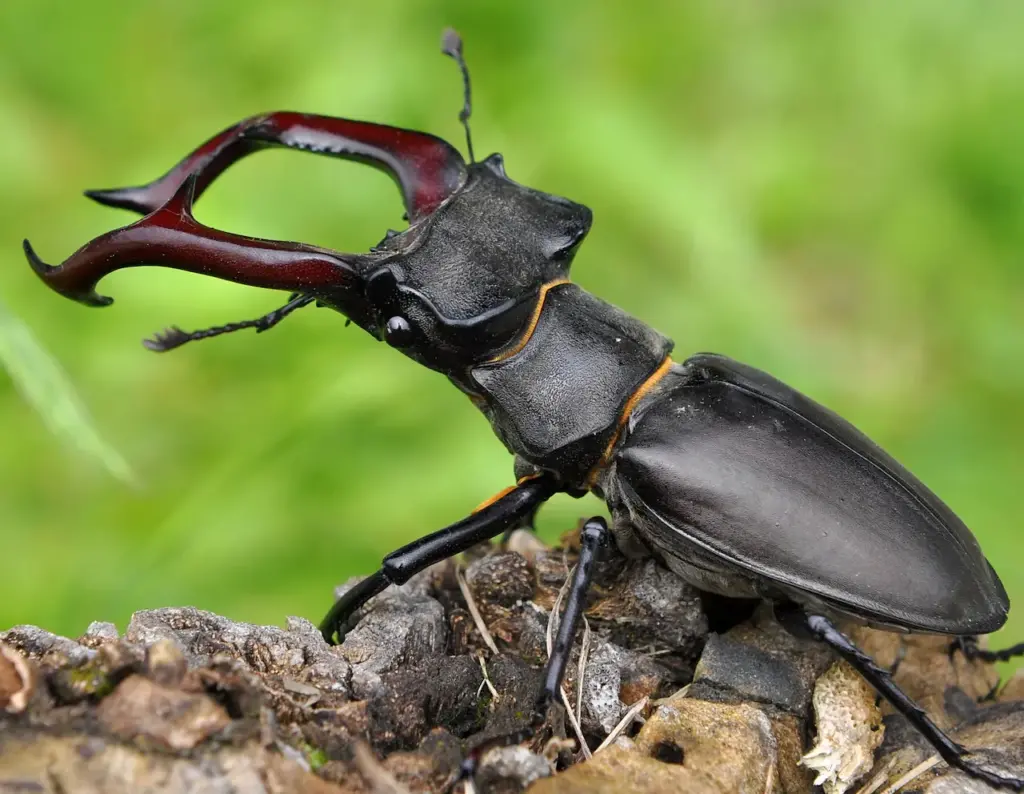
Identification Guide
The Tomentose Burying Beetle is a fascinating insect to study. In order to identify this beetle, you should familiarize yourself with its unique characteristics and markings.
This beetle has a distinct appearance, primarily displaying a black body with striking orange markings. Its body is covered with hair-like structures, giving it the name ‘tomentose’. The beetle’s markings can sometimes appear yellow or gold, similar to those of the Gold-necked Carrion Beetle. To better distinguish between the two species, here are some key features:
- Tomentose Burying Beetle: Black body, orange markings, and hairy texture.
- Gold-necked Carrion Beetle: Black body, gold/yellow markings, and smooth texture.
For a more comprehensive visual guide, you can refer to the iNat taxon page which includes images and photos for easier identification.
Knowing the habitat and seasonality of the Tomentose Burying Beetle can also aid in its identification. This beetle is typically found in North America and has been sighted in places such as Minnesota. Although it is not native to Hawaii, you might still find similar species in that region.
As for the season, these beetles are more active during warmer months, so it’s more likely to encounter them in late spring and summer periods.
In summary, when identifying a Tomentose Burying Beetle, look for its distinctive black body with orange markings, hairy texture, and consider its habitat and seasonality. With this knowledge, you can confidently identify this intriguing species.
